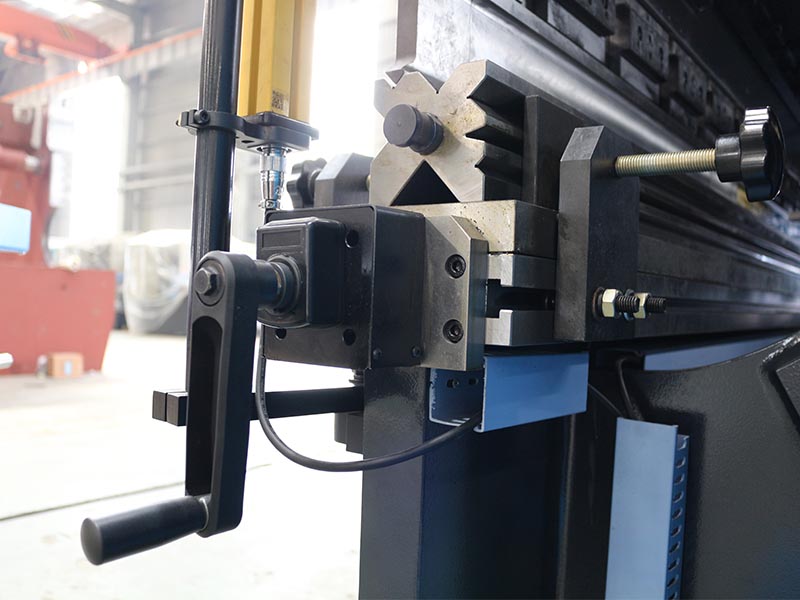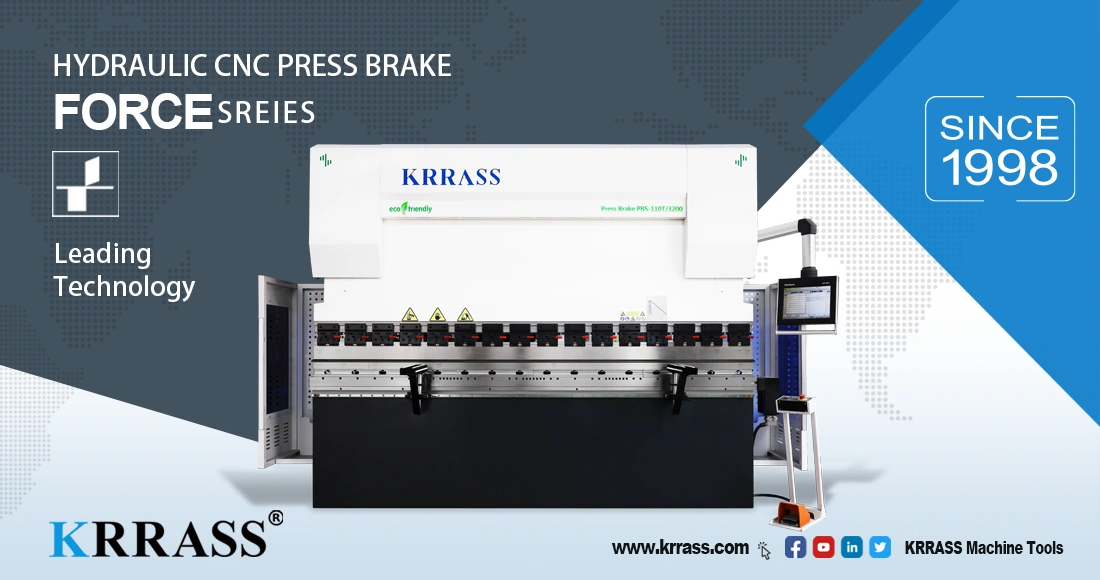
The CNC press brake is an important equipment in sheet metal processing, and its working accuracy directly affects the bending accuracy of the workpiece. In the process of bending the workpiece, the bending machine is subjected to the greatest force at both ends of the slider, and the reaction force during the bending of the plate causes concave deformation on the lower surface of the slider.The deformation of the middle part of the slider is the largest, and the final bending angle of the workpiece The size varies across the entire length. In order to eliminate the adverse effects caused by the deformation of the slider, it is necessary to compensate for the deflection deformation of the slider. Press Brake Crowning System Common compensation methods include hydraulic compensation and mechanical compensation, both of which cause upward elastic deformation in the middle of the worktable to offset The deformation of the machine tool slide ensures the accuracy of the machining joint surface and improves the accuracy of the workpiece.
Hydraulic crowning
The hydraulic crowning system of the workbench of the CNC bending machine is composed of a set of cylinders installed in the lower workbench. The position and size of each compensation cylinder are designed according to the deflection compensation curve of the finite element analysis of the slider and the workbench. The hydraulic crowning realizes the convexity compensation of the neutral version through the relative displacement between the front, middle and rear three vertical plates. The principle is to realize the convexity through the elastic deformation of the steel plate itself, so the compensation amount can be in the workbench. Realize adjustment within the elastic range.
Advantages:
The hydraulically crowning is easy to operate and does not require high workers, and it can fold high-precision workpieces. In addition, the machine with hydraulic compensation system can ensure full contact between the upper die and the plate, so as not to allow the plate to shift. The advantage of hydraulic crowning is that as the use time increases, the machine will not have wear problems, while mechanical compensation will have wear problems.From the perspective of machine durability and ease of operation, it is better to choose a hydraulic crowning system.
Disadvantages:
However, the compensation amount of hydraulic crowning is affected by many factors, such as whether the hydraulic oil is leaking, loose joints, etc., which will affect the amount of hydraulic crowning each time, resulting in inconsistencies and differences in each processing plate.
Mechanical crowning
The mechanical crowning is composed of a set of protruding oblique wedges with inclined surfaces, and each protruding wedge is designed according to the deflection curve of the slider and the working table based on the finite element analysis. The numerical control system calculates the required compensation amount according to the load force when the workpiece is bent (this force will cause the deflection and deformation of the slider and the worktable vertical plate), and automatically controls the relative movement of the convex wedge to effectively compensate.
The deflection deformation generated by the slider and the vertical plate of the worktable can obtain the ideal bending workpiece. The mechanical deflection compensation is realized by controlling the position to achieve "pre-bumping". A set of wedges forms a line in the length direction of the worktable. The curve with the same deflection makes the gap between the upper and lower molds consistent during bending, ensuring that the angle of the bending workpiece of the electro-hydraulic bending machine in the length direction is consistent.
Advantages:
Mechanical crowning is to compensate the worktable by using a wedge block. The oblique wedge can be divided into a single oblique wedge and multiple sets of oblique wedges. The mechanical crowning composed of multiple sets of oblique wedges has more compensation points than the 3 compensation points of ordinary hydraulic compensation, there is no compensation blind zone, the precision of the folded workpiece is high, and the difference between each processing plate is small, which is suitable for mass production. Compared with the hydraulic crowning system, the mechanical crowning system is simpler, will not cause oil leakage and other conditions, has a low failure rate and is environmentally friendly.
Disadvantages:
Mechanical crowning will wear out the oblique wedge with the passage of time, which will affect the compensation effect. Mechanical crowning operations require high requirements. If the same workpiece needs to be bent multiple times, workers need to make real-time adjustments. Even if the workers have sufficient experience, unpredictable errors will occur.
Generally speaking, mechanical crowning and hydraulic crowning have their own advantages, but they all have shortcomings. However, CNC bending machine manufacturers with research and development capabilities will plan to compensate for the lack of mechanical compensation and hydraulic compensation through technological development. This is also the future development of CNC bending machines. Need to be innovative!
Learn more about our products, please visit and subscribe to our Youtube channel





